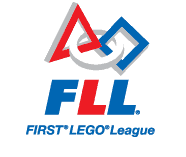RobotC
The Natural Language for the Fall 2015 season is as follows:
Natural Language is a sort of halfway language between English and computer code. It lets you address the important details of your program without having to worry about the less relevant parts getting in your way. Our goal when developing pseudocode will be to identify and organize the simple behaviors a robot needs to complete its mission.
The Natural Language used here is an extension of the RobotC language. All Natural Language statements below require a set of parentheses followed by a semi-colon. For some statements, a parameter (such as distance, power level, degrees, or side) is required which gives further instructions to the robot.
The Natural Language statements below are interpreted (compiled) by RobotC through the use of a library of functions stored in a single "include" file. This is why each of the examples at the bottom of this page include a reference to "#include Library2015.c". If you are curious about what the Library2015.c "include" file looks like, click
here. If you wish to download the Library2015.c file, right click on the following link and choose to save it to your computer:
download here.
If you end up with an error message when you press the F5 or F7 key, read the message to try to understand what it is telling you. For an explanation of common error messages, click here.
The RobotC Functions for the Fall 2015 season
|
Function
|
Parameters
|
Description
|
|
(with example
parameter)
|
|
setPowerLevel(30);
|
Level
of power
|
Sets
the level of power for the global variable called "powerLevel"
|
|
+1
to +100
|
used
by all navigation motor blocks
|
|
Moving Straight
Functions
|
|
driveForward();
|
None
|
Drives forward.
Optional parameters include distance. If no distance is specified, use one of
the "stop" or "until" functions to stop the robot.
|
|
driveForward(12);
|
Distance
|
|
|
|
|
driveBackward();
|
None
|
Drives backward.
Optional parameters include distance. If no distance is specified, use one of
the "stop" or "until" functions to stop the robot.
|
|
driveBackward(12);
|
Distance
|
|
|
|
|
Turning Functions
|
|
turnRight(180);
|
Degrees to turn
|
Turns a specified
number of degrees
|
|
turnLeft(90);
|
|
|
swingTurnRight(180);
|
Degrees to turn
|
Turns a specified
number of degrees
|
|
swingTurnLeft(90);
|
|
|
Stopping Functions
|
|
stopMoving();
|
|
Stops moving
|
|
stopIfSonarLessThan(6);
|
Distance in inches
|
Stops if robot gets
within x inches of an object
|
|
stopAfterDistance(24);
|
Distance to travel
in inches
|
Stops after x inches
have been traveled
|
|
stopOnTouch();
|
|
Stops if the touch
sensor is pressed
|
|
stopOnColor(colorGreen);
|
Color: colorRed, colorGreen,colorBlack
|
Stops of the color
sensor sees the specified color.
|
|
Until Functions
|
|
Generally, these
functions are used within a loop and are then followed by some other action.
|
|
untilColor(colorGreen);
|
Will detect when a color
is encountered
|
|
untilSonarLessThan(6);
|
Will detect when
robot gets within x inches of an object
|
|
untilDistance(24);
|
Detects when a
certain distance in inches has been travelled
|
|
untilTouch();
|
Detects touch sensor
is pressed
|
|
Special Functions
|
|
accessoryUp(); accessoryDown();
accessoryUp(90); accessoryDown(90);
accessoryUp(20,55); accessoryDown(20,55);
|
Optional: degrees of
rotation
Optional: power
level
|
Moves accessory
up/down. Optional Parameters such as degrees and power level. If no degree is specified, then motor will
stop on a Stall condition.
|
|
accessoryToDegree(frontArm,90.0,100);
|
Name of the Motor
Degree to rotate to: 0 to 360
Power Level
|
Moves accessory
motor to specified degree at specified power level.
|
|
Motor(motorA,90,FORWARD);
|
Which motor
|
Turns specified
motor a specified number of degrees FORWARD or BACKWARD
|
|
Motor(motorC,60,BACKWARD);
|
Degrees to turn
|
|
|
Direction to turn
|
|
wait(5);
|
Time in seconds to
wait
|
Waits for a
specified amount of time
|
|
waitForOrangeButton();
waitForTouchSensor();
|
|
Waits for User to
press the Orange button
Waits for the
Touch Sensor to be pressed.Bottom of
Form
|
|
Speaking Functions
|
|
say(“Some Text”);
sayPhrase(“Some Text”);
|
|
|
|
|
|
|
|
|
Example Programs
#include "Library2013.c";
/*---------------------------
Author: [Your name here]
Date: September 4, 2011
Description: Makes the robot go forward,
stop, and then come back.
Filename: ComeBack.c
-----------------------------*/
task main() {
Startup();
SetPowerLevel(30);
DriveForward();
StopAfterDistance(12);
DriveBackward();
StopAfterDistance(12);
}#include "Library2013.c";
/*---------------------------
Author: [Your name here]
Date: September 4, 2011
Description: Makes the robot go forward,
turn around, and then come back.
Filename: ComeBack.c
-----------------------------*/
task main() {
Startup();
SetPowerLevel(30);
DriveForward();
StopAfterDistance(12);
TurnClockwise(180);
DriveForward();
StopAfterDistance(12);
}#include "Library2013.c";
/*---------------------------
Author: [Your name here]
Date: September 4, 2011
Description: Makes the robot run around the block.
Filename: RunAroundBlock.c
-----------------------------*/
task main() {
Startup();
SetPowerLevel(30);
DriveForward();
StopAfterDistance(12);
TurnClockwise(90);
DriveForward();
StopAfterDistance(12);
TurnClockwise(90);
DriveForward();
StopAfterDistance(12);
TurnClockwise(90);
DriveForward();
StopAfterDistance(12);
TurnClockwise(90);
}#include "Library2013.c";
/*---------------------------
Author: [Your name here]
Date: September 4, 2011
Description: Makes the robot run around the block.
Filename: RunAroundBlock.c
-----------------------------*/
task main() {
Startup();
SetPowerLevel(30);
While(true) {
DriveForward();
StopAfterDistance(12);
TurnClockwise(90);
}
}